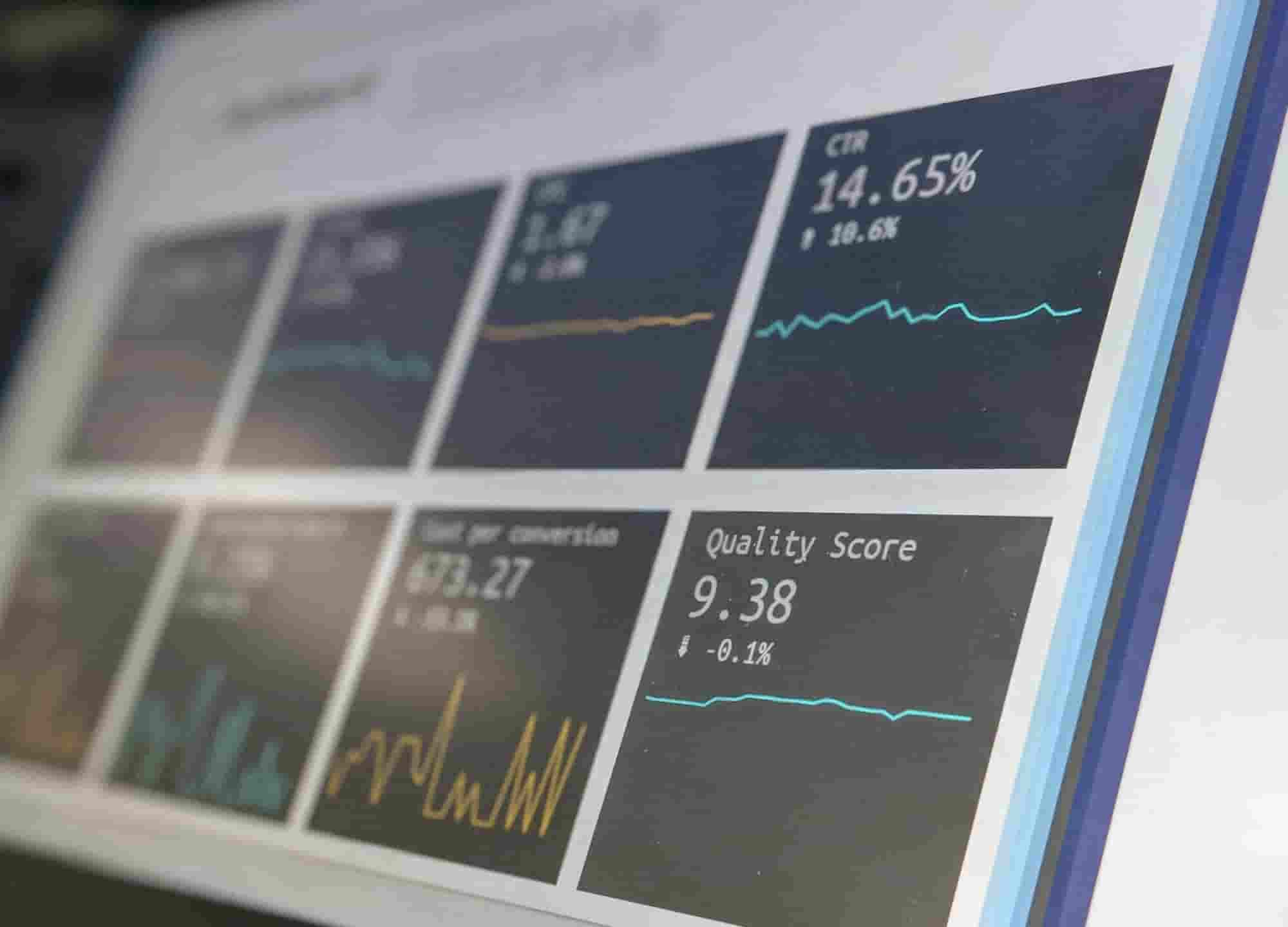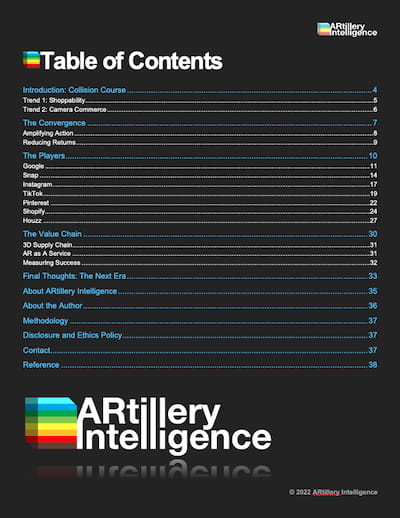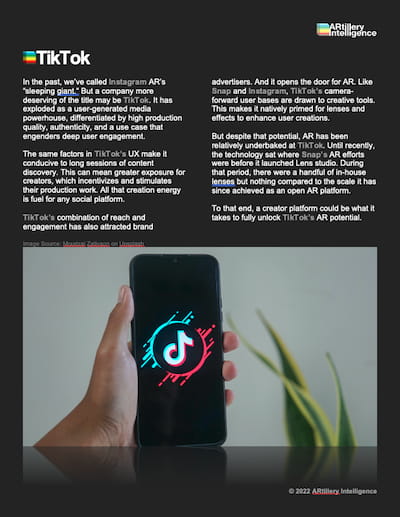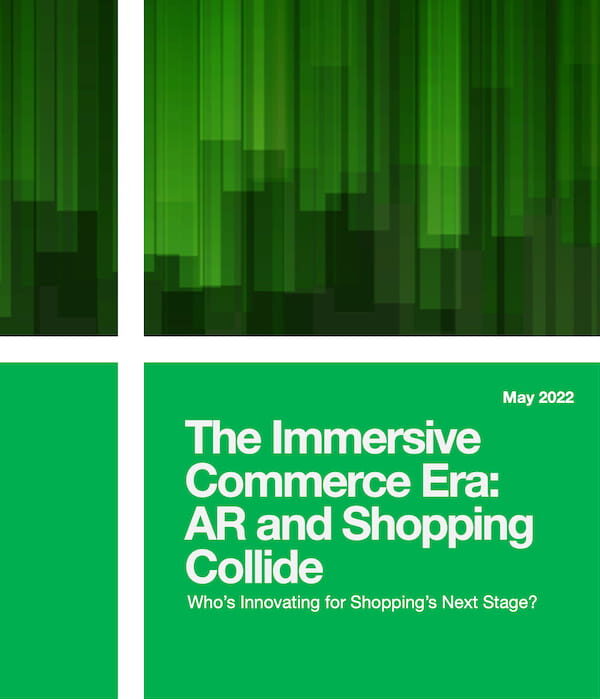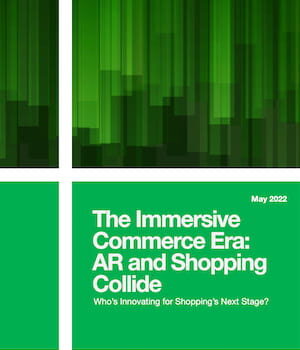
Shoppability is the new black. There’s a trend towards all things being shoppable. We’re talking buy buttons on everything from YouTube videos to Instagram Stories. This isn’t a new concept but is one of many trends that’s been Covid-accelerated as it piggybacks on broader eCommerce inflections.
To put a number on this phenomenon, consumer purchases influenced by social media – otherwise known as social commerce – are projected to grow from $492 billion globally to $1.2 trillion by 2025 according to Accenture. This growth will be fueled by the rise of online social influence, and the “shoppability” trend noted above.
Elsewhere – and for similar reasons – we see a separate trend: camera commerce. Examined recently in an ARtillery Intelligence report, this involves AR-fueled shopping. This broad category can involve 3D and spatial product visualization to virtually try on everything from cosmetics to couches.
Camera commerce also includes visual search. This flavor of AR – seen in Snap Scan and Google Lens – lets consumers point their phones at objects to contextualize them. And the killer app is interactive shopping. Camera-forward consumers can identify, and buy, items they encounter in daily travels. In fashion contexts, Snap calls it “outfit inspiration.”
Panning back, these two macro trends – shoppability and camera commerce – are on a collision course. Point your phone at a jacket a friend is wearing using Snap Scan, then buy it right on the spot. This process compresses the traditional purchase funnel through a visually-informed consumer shopping flow.
This collision of AR and shopping is also future proofed. In other words, it will only grow as it’s well aligned with the habits and proclivities of the “camera-native” generation Z. This is an important trend as gen Z is increasingly buying-empowered as it phases in to a dominant and influential position within the adult consumer population.
All of the above is underway, but there’s a ways to go in cultural acclimation and capability. The former is happening gradually in the gen Z cultural takeover, among other factors. But it could still use a jolt… which is happening as underlying capabilities evolve and as tech giants plant their stakes in AR shopping to future proof their businesses.
So far, those tech giants include the players noted already – Google and Snap. But it also includes a broader set of companies that see opportunity in this fusion of AR and shopping. We’re talking Pinterest, Shopify, Houzz, TikTok and a growing list of others with a vested interest in eCommerce-based revenue.
So who is doing what? Where are meaningful products and business models developing today? And where could this collision of AR and shopping lead us next? We’ll examine these questions throughout this report, including case studies that spotlight leading innovators at the intersection of shoppability and camera commerce.
The goal, as always, is to empower you with a knowledge edge.


The fastest and most cost-efficient way to get access to this report is by subscribing to ARtillery PRO. You can also purchase it a la carte.
This report highlights ARtillery Intelligence’s viewpoints, gathered from its daily in-depth coverage of spatial computing. To support the narrative, data are cited throughout the report. These include ARtillery Intelligence’s original data, as well as that of third parties. Data sources are attributed in each case.
For market sizing and forecasting, ARtillery Intelligence follows disciplined best practices, developed and reinforced through its principles’ 15 years in tech sector research and intelligence. This includes the past 4 years covering AR & VR exclusively, as seen in research reports and daily reporting.
Furthermore, devising these figures involves the “bottom-up” market-sizing methodology, which involves granular ad revenue dynamics such as campaign pricing and spending. More about ARtillery Intelligence methodology can be seen here, and market-sizing credentials can be seen here.



Unless specified in its stock ownership disclosures, ARtillery Intelligence has no financial stake in the companies mentioned in its reports. The production of this report likewise wasn’t commissioned. With all market sizing, ARtillery Intelligence remains independent of players and practitioners in the sectors it covers, thus mitigating bias in industry revenue calculations and projections. ARtillery Intelligence’s disclosures, stock ownership and ethics policy can be seen in full here.
Checkout easily and securely.
Ask us anything

